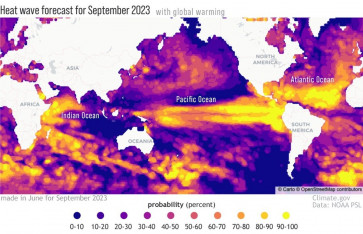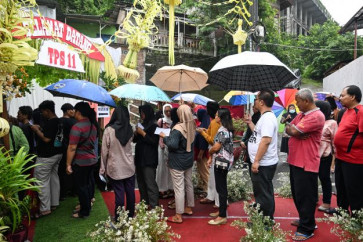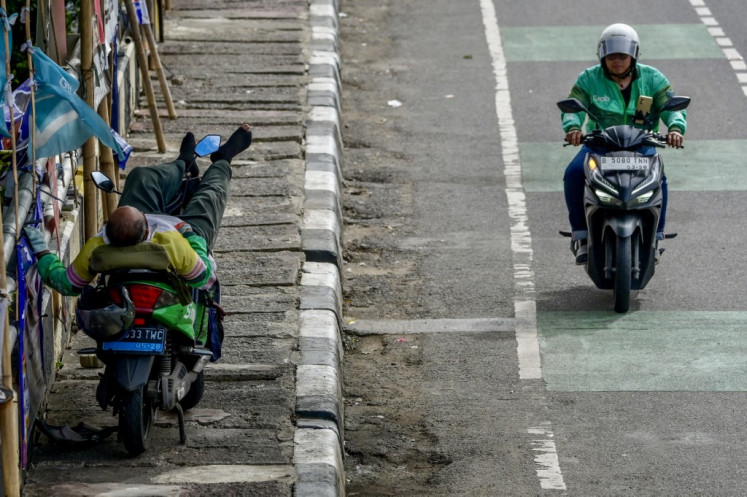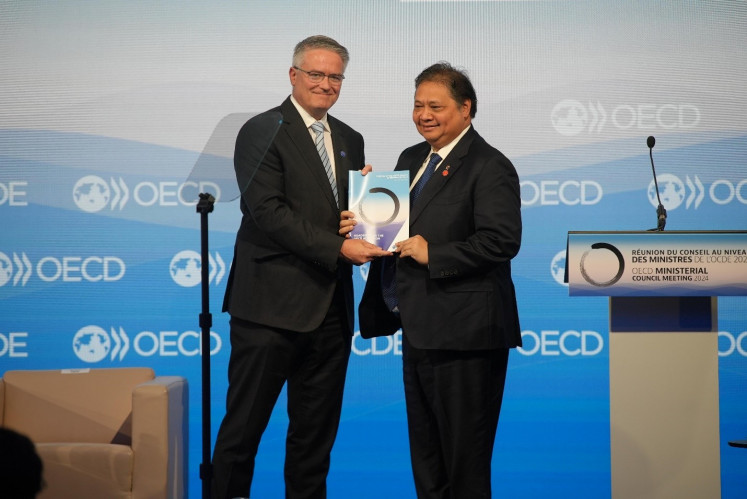Indonesia gets richer but inequality remains high
“The rich get richer and the poor get poorer” is an age-old adage that has become more relevant than ever as Indonesia becomes wealthier, multiple recent reports have shown
Change Size

“The rich get richer and the poor get poorer” is an age-old adage that has become more relevant than ever as Indonesia becomes wealthier, multiple recent reports have shown.
According to a list compiled by Forbes last year, the country’s 50 richest added US$5.6 billion to their combined wealth, which reached a record $134.6 billion last year despite global trade turbulence slowing down the country’s economy. The total figure was about 12 percent of the country’s GDP in 2019.
Prominent businessmen Robert Budi and Michael Hartono, also known as the Hartono brothers, topped the list with a net worth of $37.3 billion through various businesses ranging from tobacco and banking to startups and media outlets. However, the 2019 Global Wealth Report published in October by Swiss multinational investment bank and financial services company Credit Suisse painted a bleak picture of the country’s wealth distribution.
“Despite the rising wealth levels, wealth inequality is also greater than average,” the report reads.
The report shows that wealth per adult in Indonesia has risen by a factor of four since the year 2000 and currently stands at $10,545.
However, 82 percent of the adult population has wealth of less than $10,000 — well above the global figure of 58 percent. Only 1.1 percent of adults have wealth above $100,000, compared to 10.6 percent globally.
Indonesia’s inequality as measured by the Gini coefficient has been declining. The index was at 0.382 as of March last year, Statistics Indonesia (BPS) data shows.
But an ongoing study by SMERU Research Institute indicates that absolute inequality continues to increase despite a drop in relative inequality as measured by the Gini coefficient.
This Gini index drop has occurred because middle-segment income growth is faster than those of other income brackets. However, the absolute income growth of the rich remains higher than that of the poor, widening the income gap, SMERU researchers said.
Structural factors have influenced the shifts in inequality, SMERU senior research fellow Asep Suryahadi said. Those include the population’s education level, the modernization of the labor sector, urbanization and women's workforce participation, among other factors.
“So what needs to be done is to improve access to capital for the poor and improve their education and skills. But this is a long term effort,” Asep said in December.
The government has rolled out subsidized microcredit (KUR) and community-based economic enterprises (KUBE) to provide better access to capital and help micro and small businesses thrive.
It also provides scholarships for the poor, known as Bidikmisi, and plans to increase cash disbursement through the Family Hope Program (PKH) and prepare preemployment cards for workers to develop their skills, among other policies.
The number of poor declined to 24.79 million people, or 9.22 percent of the population, as of September 2019, BPS data published on Jan. 15 shows.
However, the country’s poverty rate only decreased 1.74 percent between 2014 and 2019, the slowest rate in the last 40 years, according to data compiled by Institute for Development of Economics and Finance (Indef) researcher Rusli Abdullah.
“As growth slows, so does the rate of poverty reduction,” World Bank vice president for East Asia and the Pacific Victoria Kwakwa said in a press statement in October last year.
Indonesia’s economic growth has stagnated at around 5 percent since 2014, with its 2019 expansion slowing to 5.02 percent last year. The figure is the lowest since 2015 and lower than 2018’s achievement of 5.17 percent.
Some of the richest have made efforts to help the poor and eventually reduce the inequality through philanthropy.
“It’s a must [philanthropy] because if inequality widens, it will cause social problems and social unrest,” Tahir, a businessman and the country’s seventh richest person, told The Jakarta Post recently.
Tahir, who founded Mayapada Group and currently chairs the Tahir Foundation, supported the government’s progressive income tax that would allow it to tax the rich at higher rates to reduce inequality.
“If people’s buying power is improved, then businesspeople can also reap a profit [through their businesses],” he said.









